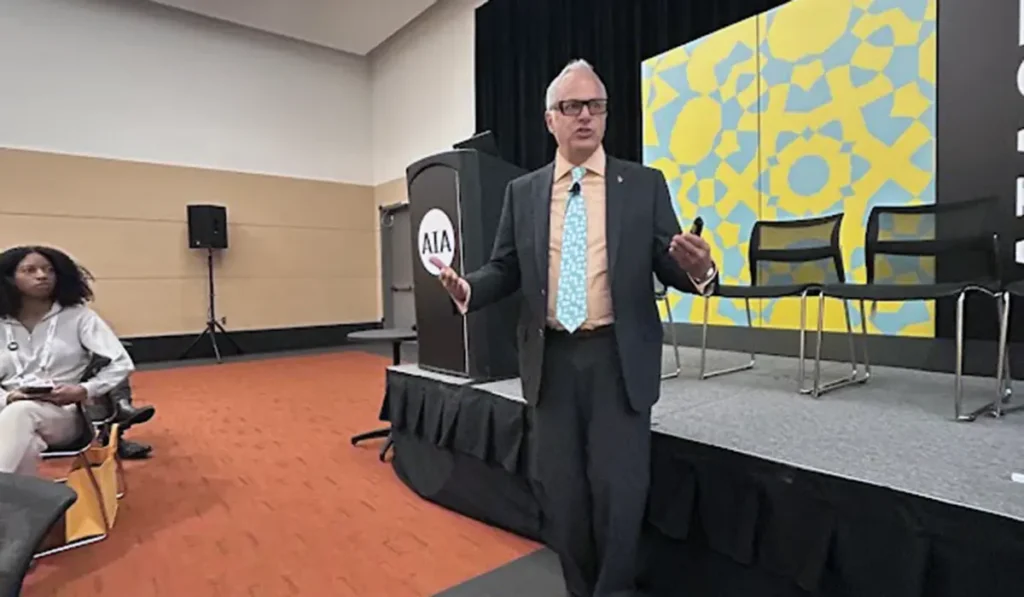Designing Confidence
Reflections from the 2025 AIA Conference

Boston is a city that balances heritage with innovation, making it an ideal host for this year’s AIA Conference. I had the opportunity to speak, connect with peers, and explore new ideas shaping our profession.
What stood out most wasn’t just the content—it was the conversations, the energy in the room, and the reminder that architecture, at its core, is still about people.
With the pace of change across many domains in the profession today, the AIA Annual Conference strives to adapt, inform, and lead providing conference attendees with relevant learning opportunities for advancing knowledge and skills. There is an energy present at the conference that all attendees can tap into. Some sessions reflected that energy, while others didn’t quite land. However, the opportunities to reconnect, share ideas were there for those willing to lean in and engage.
One keynote session focused on artificial intelligence. Allie K. Miller, a former leader at Amazon, challenged us to think differently—less about the hype, more about the practical, and immediate applications of AI right now. What if AI could review contracts for inconsistencies? What if it could learn to support our workflows in a way that reflects how we already think and communicate?
It sparked a lot of questions. Not just about how we use AI, but how we stay human in the process.
My session, Rockstar Presentation Skills for Architects and Designers, was placed in the final time slot of the final day. At first, I wasn’t thrilled. Then, I embraced the opportunity to provide a fantastic experience for the attendees before they all traveled back to their home cities and countries.
To my surprise, the room filled—and kept filling. People saw what was happening and walked in off the floor to join us.
I don’t use traditional slides. Instead, I build the session around visual prompts, audience engagement, street theater, and movement. We explore posture, tone, and nonverbal communication (body language), vocal variety, and lexicon – the mechanics of making a presentation. It’s about more than public speaking—it’s about presence, emotional intelligence, and reading a room, to persuade your audience by appealing to their emotions.
Clients choose people they trust. People who listen. People who care.
That’s what I tell the group. When you make it to the interview stage, credentials are assumed. What matters most is how you connect, how you make people feel when it’s all over. We all want to work with people who are warm, competent, and attentive. That’s true for clients, teams, and project partners alike.

Conferences aren’t just about attending sessions. They’re about people.
Throughout the conference, I had conversations with early-career professionals and long-time peers. I met new faces, caught up with friends, and spent time with other Fellows to discuss how we support the next generation of future leaders in the profession.
These experiences remind me why mentorship matters—and why I’m passionate about giving back. It’s not about having all the answers. It’s about making space for others to grow, learn, and lead.
Mentorship isn’t extra—it’s part of the work.
That belief is deeply aligned with Shive-Hattery’s culture. We value growth, inside and out. Being able to represent those values on a national stage is a privilege, and one I take seriously.
If you’ve never attended a national conference like AIA, I’d encourage you to go. Perhaps not every year, but once every 2-3 years, or aligned with specific career goals and firm goals. It’s a chance to step back, get perspective, and bring something new back to your team.
You get out of it what you put into it. And the value lasts long after the sessions end.